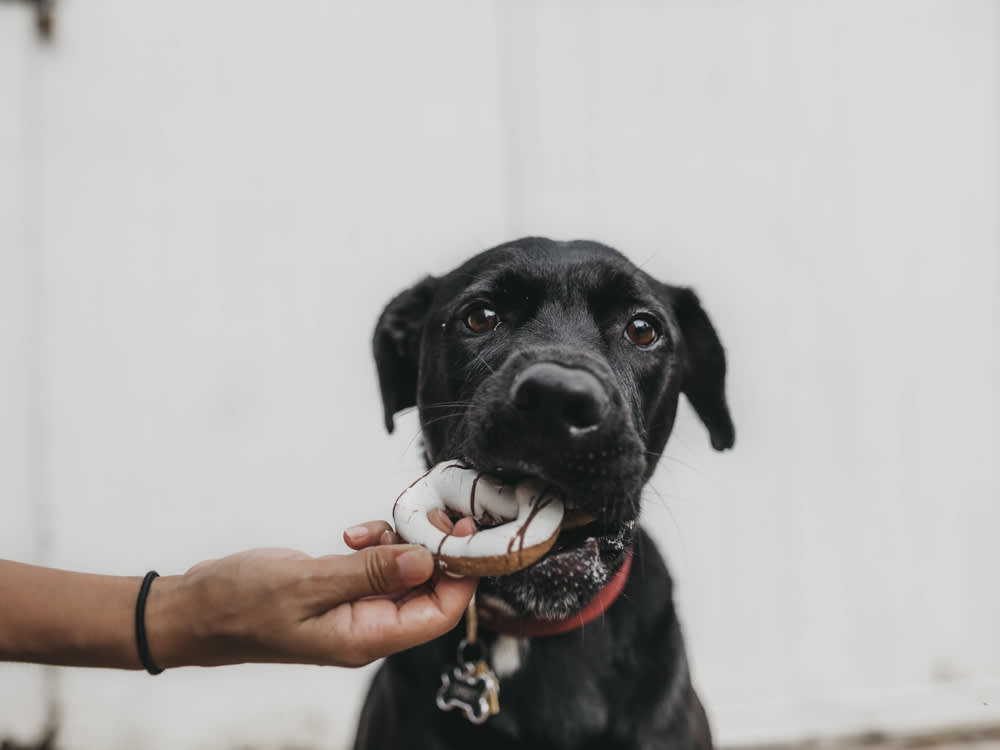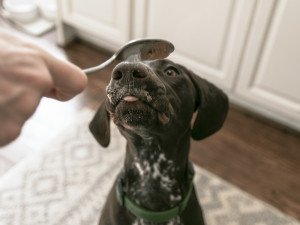Sweet But Deadly: Xylitol Toxicity in Dogs Is on the Rise
Hmm, sugar sugar. Pet Poison Helpline veterinary toxicologist Dr. Ahna Brutlag explains how this artificial sweetener can be fatal for your pet.

share article

Your pet wants you to read our newsletter. (Then give them a treat.)
What do Ketchup, cookies, and toothpaste have in common? Many contain xylitol, a sugar substitute most commonly found in sugar-free gum, but also more recently in baked goods, peanut butteropens in a new tab, and other pantry and medicine cabinet items. Oh, and it’s deadly to dogsopens in a new tab. So while you probably know not to give your dog chocolateopens in a new tab, this toxic ingredient that is slippery enough to pronounce is also stealthily camping out in ingredient lists you wouldn’t think to check. “We’ve seen a massive jump in the number of xylitol calls that we’re getting,” says Dr. Ahna Brutlag, DVM and board-certified veterinary toxicologist at Pet Poison Helplineopens in a new tab. “Calls about chocolate poisoning are still number one, but xylitol has moved into that number-two spot.”
Xylitol’s Danger to Dogs
Even small amounts of xylitol can cause life-threatening low blood sugar and liver failure. “Xylitol consumption by dogs can be extremely toxic and potentially deadly,” says Dr. Brutlag. “The most common effect of xylitol poisoningopens in a new tab in dogs is a precipitous drop in blood sugar. Because of this, seizures and body tremors can occur, which can lead to death if not treated. Larger ingestions can also result in potentially fatal liver failure hours or days afterwards.” For some perspective, a single stick of gum can kill a 20-pound dog.
Xylitol poisoning in dogs is so common that the FDA regularly sends out warnings to pet parents and even produced a video to raise awareness (watch below). Basically, the FDA statesopens in a new tab, “In both people and dogs, the level of blood sugar is controlled by the release of insulin from the pancreas. When dogs eat something containing xylitol, the xylitol is more quickly absorbed into the bloodstream and may result in a potent release of insulin from the pancreas. This rapid release of insulin may result in a rapid and profound decrease in the level of blood sugar (hypoglycemia), an effect that can occur within 10 to 60 minutes of eating the xylitol. Untreated, this hypoglycemia can quickly be life-threatening.”
Products That Contain Xylitol
In a 2015 survey by Preventative Vet, over 50% of respondents weren’t aware of xylitol or its danger to dogs. I knew xylitol was an ingredient in sugar-free gum, so I have always been super careful about leaving packs of gum in handbags around the house. But I recently discovered that many more household products contain xylitol. In addition to baked goods and medications, the ingredient has popped up in toothpaste, cough drops, and cosmetics. The Pet Poison Hotline even found a line of clothing with xylitol embedded in it! You may be thinking, My dog isn’t interested in cough drops or cosmetics. But dogs have a sweet tooth just like we do, and coupled with a sense of smell 40 times greater than ours, the risk is real. Products including xylitol include:
Sugar-free gum
Mints
Cookies and other baked goods
Peanut butter
Flavored water
Energy bars
Candy
Ketchup
Cough drops
Toothpaste
Ice cream
Deodorant
Baby wipes
Hair gel
To make matters worse, xylitol is being included in some specialty brands of peanut butteropens in a new tab. This is alarming because many people use peanut butter to fill Kongsopens in a new tab or to bake dog treatsopens in a new tab. No major brands are affected as of yet, but this news underscores the need to be vigilant about reading ingredient labels on the products we use around our pets. It’s important to note that xylitol can be listed on labels as “sugar alcohols,” which encompasses many different sugar alcohols, including xylitol.
Xylitol Poisoning Symptoms
“If a dog comes into the hospital and emergency blood work shows that they’re hypoglycemic [low blood sugar], xylitol is one of the first things [we] ask the pet owner about,” says Dr. Brutlag. Early signs include:
Weakness
Vomiting
Lethargy
Loss of coordination
Seizures
Rapid breathing
How to Prevent Against Xylitol Poisoning
Check the ingredients of your products lying around the house and keep them away from your pets. Xylitol is typically listed in the “Other ingredients” or “Inactive ingredients” section on food labels, but it’s also been seen in the “Supplement Facts” box, so make sure you read the package closely.
Keep products containing xylitol safely out of reach of your dogs; never use human toothpaste to brush your dog’s teeth; and secure household products listed as “sugar-free,” “low calorie,” or “artificially sweetened.” If your dog has ingested a product with xylitol in it, immediately call a veterinarian or take your dog to a nearby emergency veterinary hospital right away. Bring the label of the ingested product with you so your vet can calculate the level of toxicity. Needless to say, time is of the essence.

JoAnna Lou
JoAnna Lou is a New York City-based researcher, writer and agility enthusiast.

